I've been posting pictures of my baby girl in ISR lessons, and I've gotten some questions on social. Since I've now had three kids go through the ISR program, I thought I would share it here. My perspective will be as a mom, but I also have a unique perspective as someone who taught Red Cross Level 1 swim lessons for many summers in high school/college. I am not a representative of ISR, and I can not guarantee that every piece of information I share that I "know" about ISR is correct. Please verify with ISR if you have questions.

What is ISR?
Infant Swimming Rescue - although it's not just for infants! My kids have done 0-4 years old in ISR, but the website states 6 months to 6 years old. The lessons are only 10 minutes long, five days a week, for 4-6 weeks for initial sequences or 2-3 weeks for refreshers. So, needless to say, it's a commitment. Financially and time-wise.
Test Out
Your instructor will have your child "test out" two days in a row. The first day will be in summer clothes and the second day in heavy winter clothes. The idea is that clothes are heavier, so you don't want the first time they get in the water with clothes to be if they fall in.
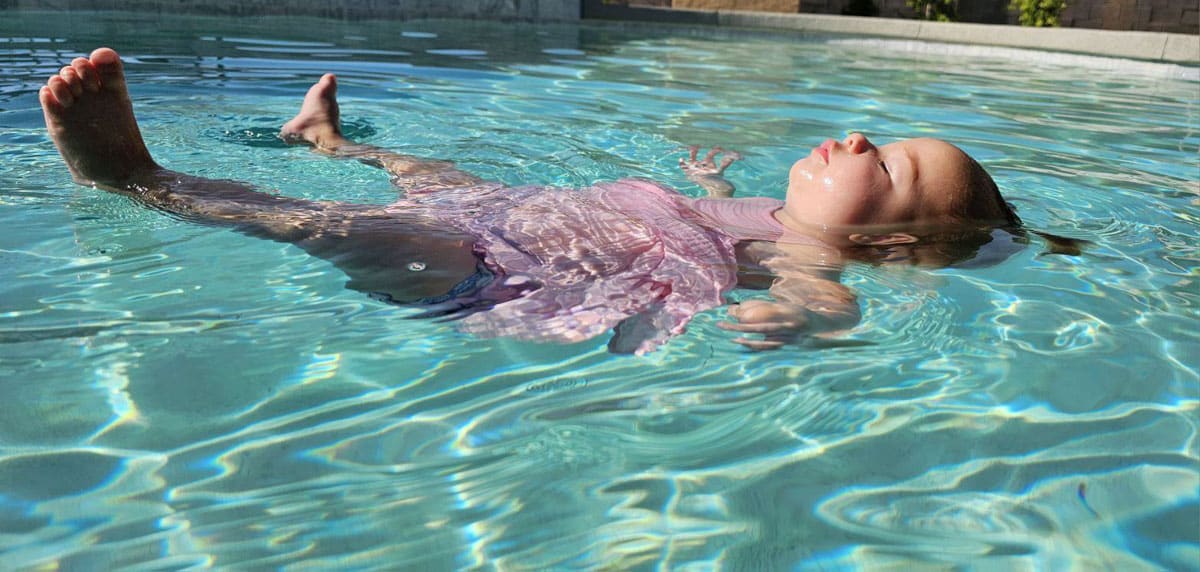

ISR vs Traditional Swim Lessons
In the traditional swim lessons I taught in college, I taught kids how to swim and float, but level 1 did not include a swim-to-float sequence. These lessons were Red Cross lessons, and it was 15 years ago. I've noticed that level one at our current traditional swim place does include a swim-to-float sequence. So, maybe that has changed now. But in the lessons I taught, I could sometimes spend all summer getting a kid to just learn to float on their back, and they were between three and five years old. So, when I first saw ISR kids on youtube I was blown away. ISR instructors can teach kids as young as six months to float and kids as young as a year (or walkers) to swim to float.
ISR is different from traditional swim lessons in many ways. ISR teaches kids to swim using conditioning and focuses primarily on survival skills. The child learns skills through a cue and reward system. Instead of coaxing the child through verbal cues, the child learns to respond to the water and desire for survival. I know that sounds intense, but you can't teach a six-month-old to float by talking to them. And that's what makes the learning process have a more intense reputation than traditional swimming lessons; it is the desire for air/survival that is driving the conditioning process. But for my kids, once the growing pains of learning the skill was over they LOVED their new skill set and developed healthy confidence and respect for swimming.
ISR Skills
There are three basic skills:
- the float
- the swim to float
- the flip-over (float to swim)
(see examples on the ISR website here)
When KJ entered at 2.5 years old, he could "swim" out to me and back to the steps. At the end of four weeks, he could swim out to me and, if he was too far away, flip over to float on his back and flip back over, swimming the rest of the way to me. He could do the same thing on the way back to the step. The following summer, he did a two-week refresher, and at the end of the summer, he was enrolled in traditional swim lessons. More on that transition later.
KK's story was a bit different. At 12-13 months, he HATED swim lessons. He cried the whole six weeks, and we barely got the float out of him. He was not walking, which is usually a prerequisite for the swim. The next summer went better; he rarely cried and got the whole sequence, but it took ANOTHER six weeks. This summer, he did a two-week refresher and then went into traditional swim lessons, which he's done very well in. He loves to swim, but he respects the water and his capabilities.
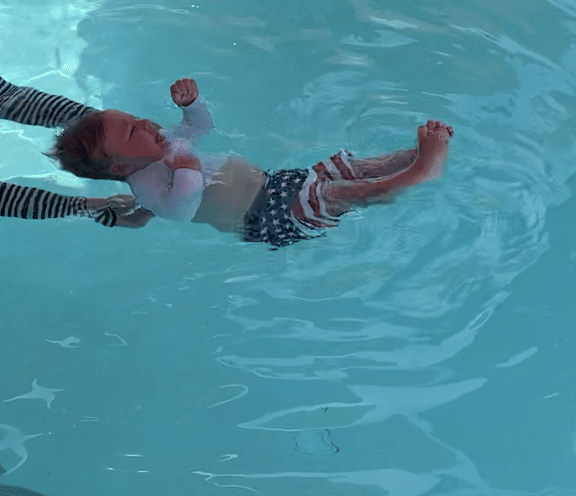
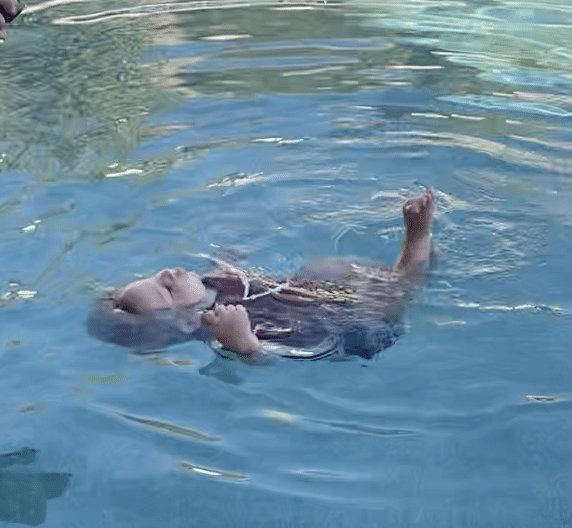
Baby girl has a similar May birthday to KK, I wanted to start later, but because of our move, I ended up starting her earlier, around the same time as KK. She cried for a week, then didn't cry for two weeks, and then some days she was good and others not. She finished in 4.5 weeks. She got float, the swim to float, but was not consistent on the flipover. So she couldn't flip back over and keep swimming unless prompted. Our instructor thinks she will need 3 weeks next summer to put it all together. She was walking by the time we finished.

Once they get the whole sequence, you only need to come back for 2-3 week refreshers in the following years.
There are also options for maintenance lessons. If you do your lessons early on in the summer, you may want to do a maintenance lesson in late summer. I've never done this, though.
(Arizona instructors tend to only offer lessons May - August) Occasionally, an instructor will have a winter session at a heated pool.
Transition to Traditional Swim Lessons
So, I'll tell you right now that traditional swim lesson places do not care for ISR. I get the comments about the kids "holding their breath" all the time. This makes sense; when you swim freestyle, you aren't holding your breath. You're blowing out between breaths. So they have to retrain your kids to do that. Also, the new instructor will have to transition your kid off the ISR cues and onto consciously deciding when to flip over or do it on command vs on cue. For KJ, this was a bigger deal than for KK. Then, there is the issue of fixing the form. My kid's floats were not the perfect plankboard float you see in traditional swim lessons. But it was safe, and that was the purpose of ISR. Traditional swim instructors then have to fix their placement in the water to be more conducive to learning strokes with perfect form.
My instructor said a lot of her clients do ISR refreshers every summer, even though they have the kids in regular stroke swim lessons. I think these two types of swim lessons can complement each other once the child is old enough. Just keep in mind that ISR works on conditioning, so if the traditional swim instructor doesn't respect your child's skill set, they will enforce inappropriate cue responses. At best, you lose money invested; at worst, the child develops unsafe habits. So, the younger your child is, the bigger the impact this makes. My instructor recommends starting kids with strokes around 5-6 years old. After my experience with both boys, my opinion is a bit younger like 3-4, but it may depend on the child. I would keep my kids doing ISR refreshers until five as well.
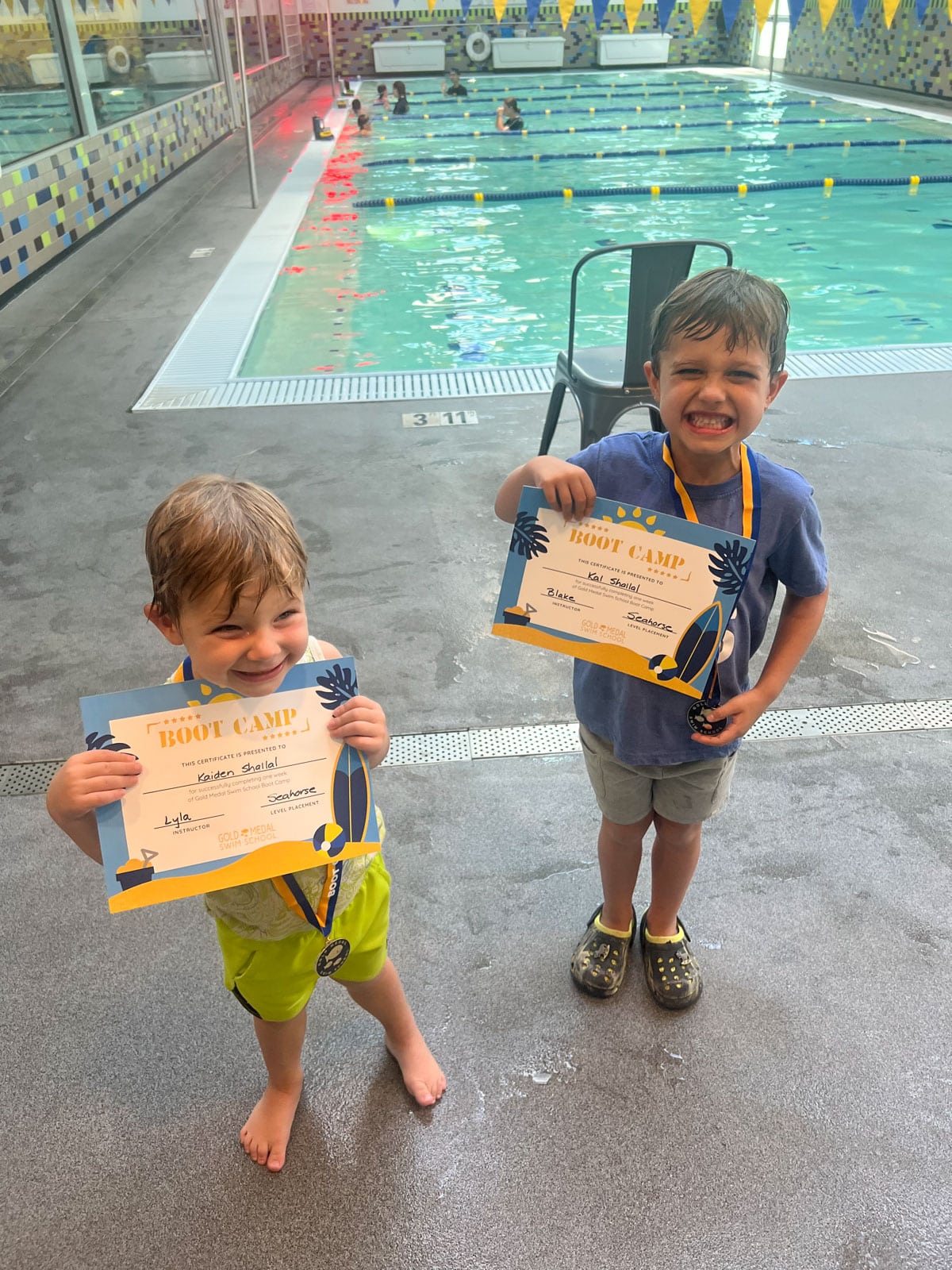
Boys finishing up their bootcamp week this summer in traditional swim lessons. KK started the summer with an ISR refresher and then I put him in traditional strokes lesson. He leveled up quickly.
Does ISR create fear?
ISR has a reputation for being "intense." My instructor said ISR was revamped a while ago, and this changed some of the things they do to "test kids out." Like the used to have kids practice having a wet shirt over their face. The goal was to help children save themselves in any scenario, but this earned them a reputation for being intense. Kids don't like to float on their back, thats very common. And they will be forced to in ISR. And so they often cry and protest, another reputation of ISR. Of my kids, I had one who barely cried, one who cried all summer, and one who was 50/50 their first summers. But all my kids LOVE the water now. Do they have a healthy respect for it? Yes.
They have never worn floaties or a life vest, and their experience in ISR has taught them survival skills and respect for those skills. So, for my kids, I would do it again in a heartbeat. However, I had a friend whose kid cried all summer in ISR, then developed an intense fear of the water. He went into regular swim lessons and did great until he had to stay out of the pool for a couple of months due to Croup, and now he is absolutely terrified again. But I honestly think that is the exception, not the norm. Regularly swimming with my kids outside of ISR helped them in and out of ISR as well (although there are rules on that, see below.)
ISR Rules
ISR has a LOT of rules, which I religiously followed the first summer I had my oldest in. Then, slowly, after that, I kind of got more lax.
Foods: There is a list of foods they don't recommend your child consume before swim lessons and for the duration of your child's lessons. By the third kid, I stuck to no dairy within 2 hours of swim lessons and no applesauce/apple products until after swim lessons for the day. I also gave them no food at least an hour before. Most of the guidelines, which are intense, are to help prevent vomiting in the pool. The more upset your kid is, the more air they will swallow, and the more likely they will have a big burp or vomit a little bit. None of my kids ever vomited, but they did burp. I have seen other kids vomit, but it's always the ones that were very very very upset. So they are screaming, swallowing air in addition to lessons. Despite crying every day the first summer, KK never vomited.
Towels: They recommend you bring three towels. By summer five, I was bringing two towels. One for the deck and one for the kid.
Swim Diapers: Per ISR rules, I did double swim diapers for the kids. With baby girl, I got smart and started making disposable diapers under a fabric (not all instructors will allow this.). My instructor was fine with that, but it can vary for each instructor. Baby girl had a habit of pooping right before lessons in her diaper, so the disposable underneath was great to throw away, and then she would swim in one diaper. By the third kid, I also stopped bothering to put a swimsuit on a one year old in the shade, she just swam in her diaper most days.
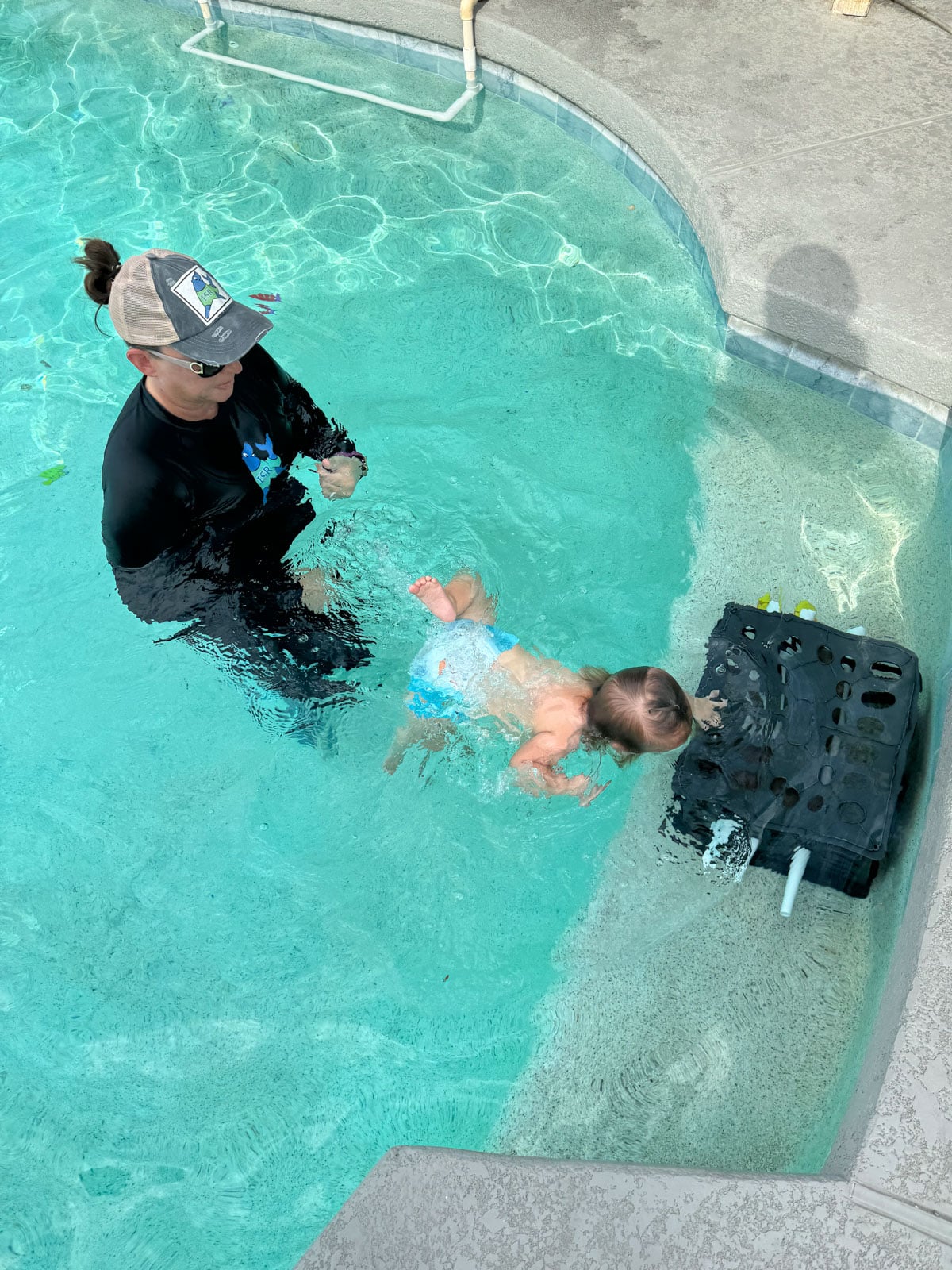
Daily Buds: This is important for the instructor! Ours had a QR code where you could quickly do the form every day.
Water Experiences Outside of ISR: They recommend you limit water exposure during lessons. This is because ISR is a conditioning technique, so if you reinforce undesirable behaviors while in the pool with them, it could make your swim lessons take longer. My ISR instructor would always give guidelines like only have them swim to you or the step, don't break the float (aka don't try it at home) right now.
Parent Involvement
My instructor gets her parents in the pool with them and provides training sessions on how to continue to support skills when swimming at home. It's important you follow these because if you reinforce undesirable skills too many times, they could lose the skill.
My Thoughts on ISR
When you see the kids on social media showing off their ISR skills, it's nothing short of impressive. When you hear the drowning stories, it breaks your heart. Then you see people on the internet arguing about ISR vs traditional swim lessons. It can be hard and overwhelming to decide what is best for your child. One thing that surprised me about ISR is that it is a skill set just like traditional swimming. ISR skills are just that, skills. Just like toddlers regularly trip and fall even though they've learned to walk, your kid will never be 100% on their skills. They will be safer than if they didn't have the skills, but no kid is 100%.
What I've observed is that even after testing out, my kids will be about 95% solid in their skills. But occasionally, something happens: they gulp water at the wrong time and need help. So, I don't ever "think my kids can swim" just based on ISR. I just hope that if all systems in place: gates, adult supervision, etc fail. That ISR will give them a fighting chance. But no kid is "drowning proof." The baby LOVES to swim and exhibits no fear in the pool with us; I'm 100% certain she would dive right in with or without us there. The boys developed their respect around two years old, and I think ISR and the fact I never put floaties on them (which gives a false sense of security) were responsible for that. They had the skill set but were respectful of the water and knew that an adult needed to be around. They knew their skill set was only as good as the adult in the pool with them.
But again, no kid is "drowning proof". Even strong swimmers can fail when too tired, etc. So, I'm a big fan of ISR, and I'm so happy I did it with my kids. However, I don't rely on ISR as my only safety measure at any age and neither should you. Pool fences, locked doors, and supervision are the most important. I believe this so much that I'm paying to have a pool fence installed in the rental we will be in when we move to Texas. I hope to be in that rental for a few years, but even one year is worth it because a fence is your best defense.
Feel free to ask me any questions if there is anything I left out!





Jon Von says
L'utilisation du bois de chauffage favorise l'entretien des forêts.